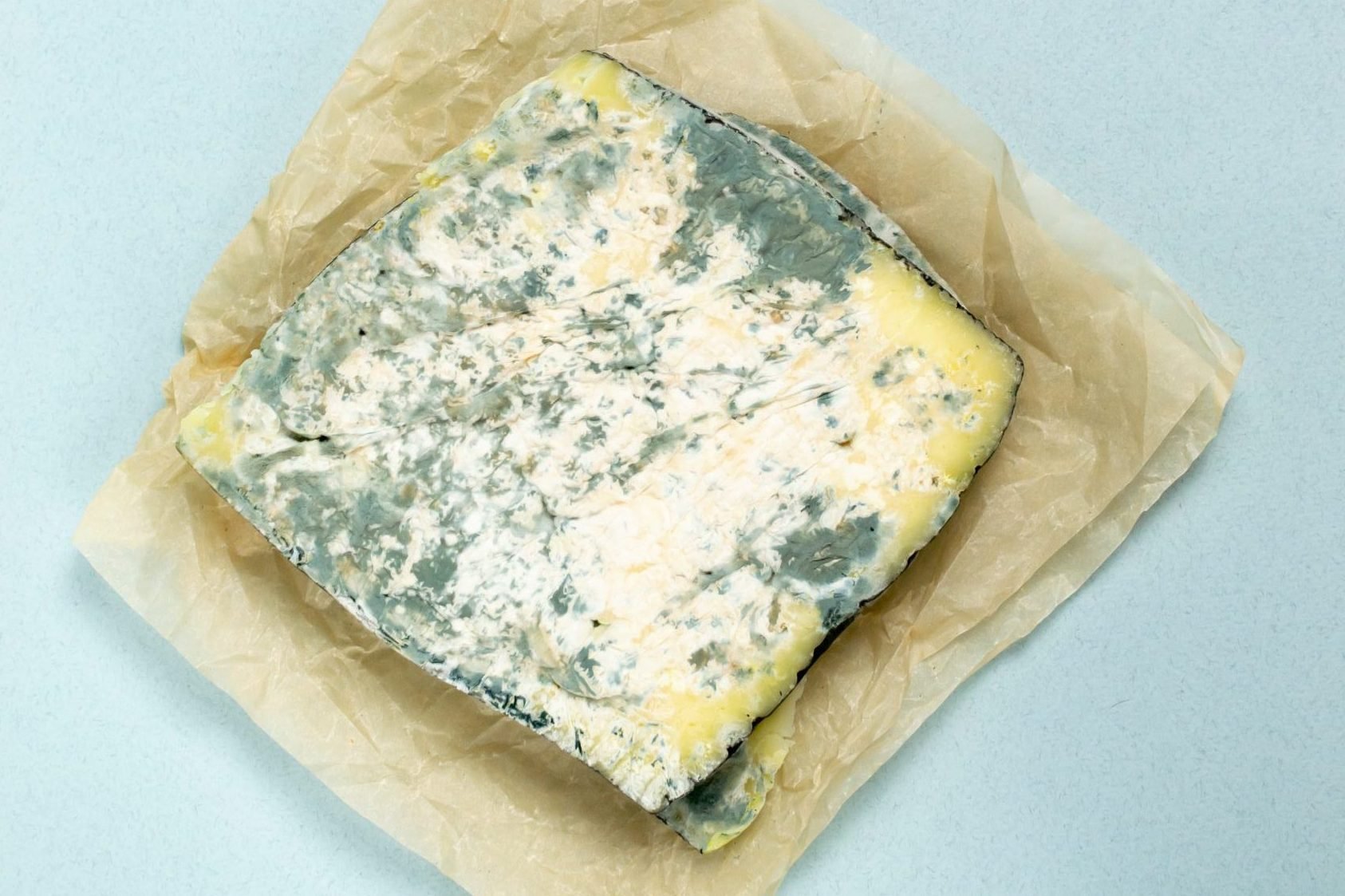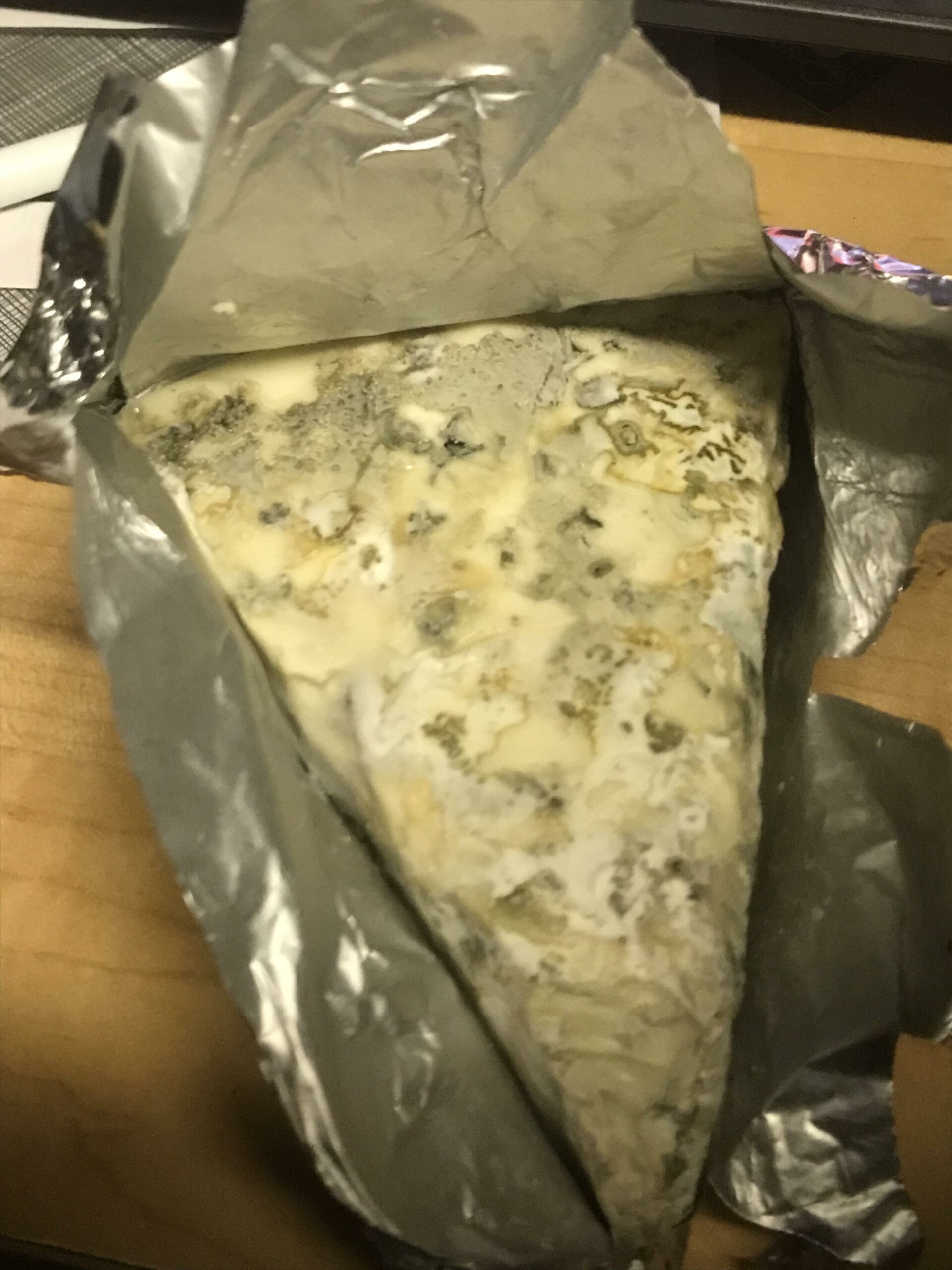Why is my blue cheese wet?
Jump To:
Ever wondered “Why is my blue cheese wet?” Well, you do not have to worry about it! You must be familiar with tear-like drops of water on your cheese’s surface, especially if it has been sitting for a while right after you take it out from the fridge.
There is a reason behind the droplets and your cheese being wet. Solid cheese is made up primarily of coagulated milk solids, or curd. This fat is held together by a web of protein chains. When brought to room temperature, the protein chains begin to break down, allowing the butterfat once trapped to escape and bead onto the cheese’s surface.
You won’t see the shiny, slick coating on cheese straight out of the fridge. Your cheese’s liquid outside is excess water or liquid whey. Use a paper towel or napkin to wipe the cheese off. Naturally, aged cheeses can retain some moisture in their packaging.
Shelf Life Of Blue Cheese – Can blue cheese go bad?

Blue cheese is a distinctive cheese. But, there’s a question: can blue cheese go bad?
It’s technically already “bad” because there is mold already on the cheese’s surface. But is it possible for it to go bad and become unsafe to eat? It can.
Blue cheese is safe to eat because of the edible mold (Penicillium). This edible mold is a created mold, that is native to preparing blue cheese. However, if non-native bacteria grow in the cheese blue cheese can go bad.
This particular dairy product can be a little more difficult to store than other dairy products. But similar to storing Brie Cheese.
The shelf life varies depending on the technique that you use to store it. It is important to know how long does blue cheese last at different temperatures.
Storage Techniques And Tips For Blue Cheese – Does blue cheese go bad if not refrigerated?

Let’s now talk about how to store blue cheese, its shelf-life, and how to tell if it has spoiled. This sounds interesting. Continue reading.
Wrapping the blue cheese tightly in plastic wrap to store it in the fridge is not a good idea. As there are living organisms on the cheese’s surface that need air, tight wrapping will quickly lose flavor.
So use the wrap in the wedge of the foil that it came in. If you’ve already discarded the foil, use wax paper or parchment paper to loosely cover the blue cheese and store it in the fridge.
- Blue cheese will only last a few hours, typically 2 hours if it is kept on your kitchen counter. It is best to store it in a cool, dry place.
- Blue Cheese is best in the refrigerator for as long as 3-4 weeks if it is wrapped properly. It is still safe to add a week to the expiry date of the package.
- Blue cheese that is sold in an airtight container can also keep fresh for several weeks after opening. The label may suggest that you eat it within one week to ensure the best quality.
You can freeze blue cheese indefinitely, but for best quality, it should not be frozen for more than 6 months.
A key point to remember about freezing blue cheese is that it becomes crumbly and loses some taste after thawing. Therefore, it’s best to use thawed blue cheese in cooked dishes like casseroles, and stews.
Signs Of Spoilage For Blue Cheese – How can you tell if blue cheese is spoiled?

- Do not eat blue cheese with any mold that is not native. The spoilt part of the blue cheese may have turned pink, yellow, or brown. In a few cases, the blue cheese may have some fuzzy grayish mold. It’s no longer safe for consumption.
- The color of the cream of the cheese is another thing to consider. If it has changed in any way (e.g., is it pinkish, greenish, or brownish), then the cheese is probably bad.
- Another good indicator of spoilage is the smell of the cheese. Bad blue cheese is likely to smell like ammonia and not the natural blue cheese smell.
Lastly, make sure to believe your instinct. If you can sense that there’s something bad with the blue cheese, do not hesitate to get rid of it! After all, your health matters more than the money that you have invested in any food product or commodity!
Conclusion
Blue cheese can be kept fresh for up to two weeks after its expiration date. You can either use the foil that it comes in or you can choose parchment paper, wax papers, or cheese wrap to store blue cheese.
You should throw out any moldy material that isn’t native to the cheese. When blue cheese is bad, it can smell like ammonia, or the cream will change color.
